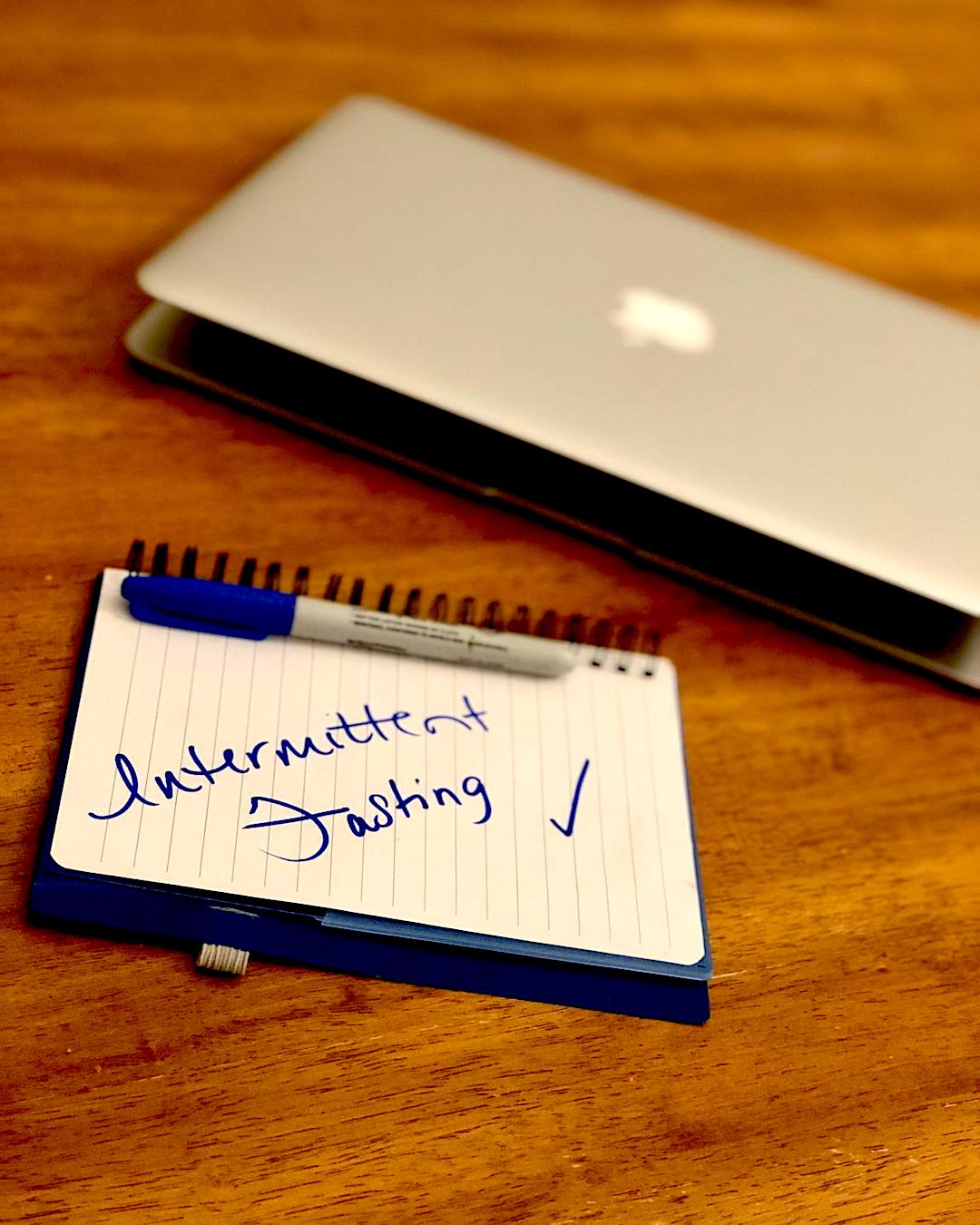Intermittent Fasting: It’s Simple

“We are wired for feast and famine, not feast, feast, feast.”
Dr. Jason Fung, MD – The Complete Guide to Fasting
About a year and a half ago, I was speaking with a friend of mine, who also happened to work with me at the time, about his eating habits. He informed me that he typically went 48+ hours in between meals. I remember quite well, that I looked at him like he was NUTS .. because, I thought he was.
Fast forward about a year (approximately July 20th, 2019), and a prior student of mine asked me to meet her for lunch. She and I keep in touch (she babysits my kids when she is home from college) and her younger sister was my student, as well, so I am quite friendly with the family. While we were eating, she asked me if she could tell me something, but I had to promise I would keep any negative comments to myself. Quizzically I asked her to continue, and that was the moment my life changed.
She proceeded to inform me about her new way of life (WOL) – something called IF, or intermittent fasting. This time, however, she was talking in terms that I could understand – she fasted for no less than 20 hours, and ate for about 4 (hours). This was an ongoing WOL for her, her mother, and her sister, and she said she felt amazing. She had lost weight and she off-handedly mentioned that there were monstrous health benefits, outside of the weight loss. Her sister (who was also there) piped up and said that she had never been happier. That for her, it was all about her temperament changing, and finally being able to see herself and her world in a new light. When I had her as a student, she said she had many dark days – even if I didn’t know it at the time.
This conversation took up most of our lunch date – I had SO many questions – but I walked away invigorated. Instead of the overwhelming sense of “no way!”, that I had felt talking with my coworker, I had the feeling of, “I can do this”. I can only attribute it to perhaps timing – maybe I was more ready to hear her message than I had been his – but this didn’t seem all that hard. I suppose it could have also been the way the information had been presented to me, but all I knew was that life was going to change for me on July 21st.
And I was right. I got up that morning, off-handedly mentioned to my husband that I was going to do this, and I was off (he even joined me, in a lesser version, after a few days). I haven’t looked back, since.
Intermittent fasting, outside of Zeal being the initial catalyst, deserves all the credit for most of the positive changes in my life. I began to adopt this attitude of, well, if I can do IF, then I can that, too (fill in the blank).
I had previously tried so many things (as most of us have) – when I was quite young I did Atkins (that is what my mother was famous for doing, so why not); I tried ViSalus and a handful of other “magical weight loss drinks”; I tried the gym, 7 days per week, until I burned out; I did Weight Watchers; calorie counted; I mean, the list goes on. And you know what ALL of those things had in common? I couldn’t and didn’t stick with any of them. Not even for the amount of time that I have already done IF. Little did I know that everything I had been taught, was wrong.
Because I don’t ever do something half-way (remember my hour and a half conversation with the doctor in my Zeal for Life post?!) I began to research. I looked into Facebook groups, I ordered books from Amazon, I talked to people that I didn’t even realize, either knew about intermittent fasting, or even currently did it – I was on a quest.
And here is what I learned:
The Options of How
There are a variety of methods, or schedules, that you can employ for IF –
16/8 Method: This is where you fast for 16 hours, and then eat for 8. There are lots of varieties to this schedule, and this is what I mostly do. Typically, on a normal week, I fast for about 22 hours, and eat for about 2. You would not want to start there, but building up to that can become a goal of yours. It is not as scary as it sounds – many of those hours, if timed right, are while you sleep.
5:2 or 4:3 Method: This method allows you to skip some days of fasting, because you would do 5 normal eating days and then fast for 2 (or, have 4 normal eating days and then fast for 3). Sometimes people call this Up/Down days, because you can technically have 500 calories on your fasting day(s), and then eat normally on your non-fasting days – hence, up/down.
Alternate day fasting: This is almost a variation of the above schedule, but here you do a 24 hour fast, every other day. So, fast Monday, eat regularly Tuesday, fast Wednesday .. you get the point.
**There are other methods out there, but I would say these are the most common.
The Why
Phew – why fast?! So many reasons. Of course, yes, you lose weight. You also go through something called body recomposition – where your body’s fat and muscle change. Niiiice!
There is appetite correction that occurs – which will become your best friend – WHAT? I’m craving fruits and veggies now and not all the chocolate like normal?!
But perhaps the most amazing, is the health benefits outside of weight loss:
- Lower blood sugar and insulin levels – ummm, hello diabetics!
- Improved lab draws (I will talk about this in another post with my own records).
- Less inflammation
- Doctors and scientists are finally now talking about IF being related to the elimination of cancer cells, assistance with Alzheimers, and longevity in life. All of these things are due to autophagy, which is essentially the “getting rid of broken down, old cells” in your body.
Who wouldn’t want all of the above, plus weight loss?!
We were really never MEANT to eat the way that the standard American diet tells us to eat. We were initially told to eat 3 small meals a day. Then it was, eat 3 small meals and 3 snacks in between those meals.
When you do intermittent fasting however, your insulin levels drop, and it tells your body to start using other fuel sources – i.e. FAT. If you live a life where you just eat, and eat, and eat, your insulin levels never have the opportunity to fall, and all of the fat that you have stored in your cells (you know, for a rainy day) never gets used. That sounds like a problem. Our ancestors never just ate and ate and ate – that is why when they did eat, it was called “breakfast” because they were doing just that – breaking their fast.
**I probably should have mentioned this sooner, but I am not a doctor, nor am I a health care provider. You should not radically change your lifestyle without discussing it with your provider. However, I will say that it is just recently that providers are learning more about IF, and even willing to entertain a conversation regarding it.
Resources
There are so many resources out there that you can find, but the resources that I follow, I will place below.


Delay, Don’t Deny, which is written by Gin Stephens, is like a fasting bible. She gives you all the ins and outs of fasting, plus she talks about the great importance of the clean fast.
Dr. Jason Fung, MD, is another expert on fasting. Some of his teachings are a little different than Gin’s (especially around the clean fast), but his text, The Obesity Code will give you insight into more than just fasting.
There is an invaluable Facebook group that is associated with Delay, Don’t Deny, and you can find it here. This group keeps me motivated, allows members to ask questions, is super positive, and feels like the greatest little (big!) community. If you are going to follow Gin’s plan, I would say her Facebook group is necessary.
And the only other thing you really should have, or know about, is the tracking apps that are associated with IF. I use the LIFE app, which you will see examples of below, but my husband uses Body Fast. There isn’t really a right or wrong app to use, but I would say, at least in the beginning, you should really use one of them to track your info. It would be awful to not track your data and look back, wishing that you had. Or, to not realize that you were breaking some fasting rules, simply because you weren’t keeping track of it.
My Info
So, I am sure you are wondering about the measurable pieces of IF that I can depart to you, from my own experience. Like I mentioned above, I fast around 22 hours a day, and I eat for approximately 2. My “window” (the time that I eat) is usually from 11am-1:00pm, or 1:30pm. That time works best for my overall schedule, but it took a while to figure that out, with many different windows tried in between.

I have lost around 22 pounds (some days it is more, and some days it is less). My inches have gone down, and I am better equipped to bust it out at the gym.

Since IF – because of IF – I have a different relationship with food. I am so much more aware of what goes into my mouth (I even pay attention to what I may or may not be licking off of my fingers when I am making meals for my children). I crave the “good foods” and I am more attuned to how much I struggled with eating, and why I ate what I ate.
I also go to the gym. I started this about 3 months into my fasting journey, and it feels different from when I was going to the gym years ago, 7 days a week. This feels sustainable, and simply like the next step in my journey.
Intermittent fasting really feels like it has given me a new lease on life. Even things that don’t seem to really connect, are different since IF. My lifestyle change into intermittent fasting is something that I can’t put a price tag on – it is that invaluable.




